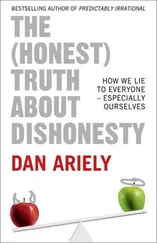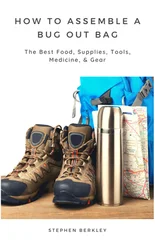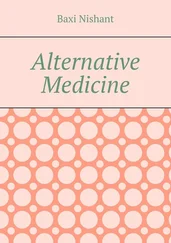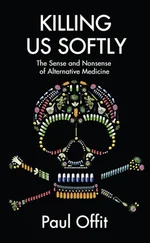Background
Oxygen is essential for life and has many uses in conventional medicine. For instance, if the lungs are no longer capable of taking up sufficient amounts of oxygen, the patient may be given oxygen-enriched air to breathe.
In the context of alternative medicine, however, oxygen therapy is much more controversial. Alternative oxygen therapy is practised in a variety of ways, which differ according to the way in which oxygen is administered, the type of oxygen (e.g. ozone) administered or the conditions being treated.
There are many ways to administer oxygen. For example, it can be injected subcutaneously or a patient’s blood can be drawn, exposed to oxygen and re-injected into the body. Alternatively, oxygen-enriched air can be applied to the skin, or oxygen-enriched water can be used for colonic irrigation.
The range of conditions supposedly treated by oxygen therapy includes cancer, AIDS, infections, skin diseases, cardiovascular conditions, rheumatic problems and many other illnesses.
What is the evidence?
The fact that we all need oxygen for survival does not mean that more oxygen than normal is beneficial. In fact, it is not: there is plenty of evidence that too much oxygen can be harmful to patients. And, of course, ozone is well known for its extreme toxicity.
Some of the many forms of oxygen therapy have been tested in clinical trials. The results were not convincing and it is therefore safe to say that no type of alternative oxygen therapy is supported by sound evidence. Thus the potential risks clearly outweigh the documented benefits.
Conclusion
Oxygen has a wide variety of uses in conventional medicine, but its role in alternative medicine is based on biologically implausible theories. Therefore, alternative oxygen therapy is unproven and, worse still, potentially harmful. We recommend avoiding it.
Reflexology
A therapeutic technique applying manual pressure to the soles of the feet in order to treat or prevent illness.
Background
Manual massages of the feet are usually experienced as relaxing and it is therefore not surprising that they were used in various ancient cultures. But reflexology is different. It is based on assumptions by William Fitzgerald who, in the early twentieth century, postulated that the body is divided into ten vertical zones, each represented by part of the foot. Fitzgerald and his followers developed maps of the soles of the feet showing which areas correspond to which inner organs.
Reflexologists take a brief medical history and then manually investigate the foot. If they feel a resistance in one area they are likely to diagnose a problem with the corresponding organ. The therapy then consists of a high-pressure massage at this point, which is believed to repair the function of the troubled organ and ultimately to improve the patient’s health or prevent illness.
One session may last about half an hour, and a series of treatments may consist of ten or more sessions. In the absence of any health problems, many therapists recommend regular maintenance sessions for disease prevention.
What is the evidence?
The postulated reflex pathways between a certain area of the foot and an inner organ do not exist, and the notion that resistance in one area of the foot is a reliable indicator for a problem with a certain organ (e.g. kidney) is unfounded. Hence, the technique is not biologically plausible. Moreover, several different versions of reflexology maps exist — reflexologists cannot even agree among themselves how to apply the treatment. Clinical trials have shown that reflexology has no diagnostic value. Its effectiveness in treating certain health problems has been tested repeatedly. Even though the results have not been uniform, they generally do not demonstrate convincingly that this therapy is effective. There is also no evidence that regular reflexology might prevent diseases.
People with bone or joint conditions of the feet or lower legs might be harmed by the often forceful pressure applied during treatment. Otherwise no serious risks are known.
Conclusion
The notion that reflexology can be used to diagnose health problems has been disproved and there is no convincing evidence that it is effective for any condition. Reflexology is expensive, and it offers nothing more than could be achieved from a simple, relaxing foot massage.
Reiki
A system of spiritual healing or ‘energy’ medicine which is similar to the laying on of hands.
Background
Reiki healers believe in the existence of a universal energy which they can access in order to generate healing effects in humans, animals and plants. This universal energy flows through a reiki healer’s hands when he or she places the palms upon or close to the recipient. This allegedly enhances the recipient’s own healing potential.
Reiki is popular far beyond Japan, where it was developed in the early part of the twentieth century by Mikao Usui during a period of fasting and meditation on Mount Kurama. It is used for treating all medical conditions, for improving quality of life or for preventing disease.
The concepts of reiki are contrary to our understanding of the laws of nature. The approach therefore lacks biological plausibility.
A treatment session would normally involve the fully clothed patient lying down on a massage table. Then the healer may or may not touch the client while transmitting healing energy. A session may last for about an hour and most patients would experience it as intensely relaxing.
What is the evidence?
There are several clinical trials of reiki and some of their results seem to suggest that this approach is beneficial for a range of conditions. However, most of this research is seriously flawed. For instance, many of these unreliable studies compare patients who elected to receive reiki with others who had no treatment at all. Any positive outcome in such a trial is likely to be due to a placebo effect, or to the attention those patients receive, and not necessarily to the reiki intervention itself. A critical analysis of the existing evidence therefore fails to demonstrate that reiki is effective.
There is, of course, a danger that reiki is used in serious conditions as a replacement for effective treatments, particularly as reiki practitioners claim to help any type of patient. There are, however, no direct risks associated with this approach.
Conclusion
Reiki is a popular form of spiritual healing, but it has no basis in science. The trial evidence fails to show its effectiveness for any condition.
Relaxation Therapies
A range of therapeutic techniques which are specifically aimed at eliciting a ‘relaxation response’ in order to generate positive health effects.
Background
Patients experience many alternative therapies as relaxing, e.g. meditation, hypnotherapy, autogenic training, massage, reflexology. While these therapies generate relaxation as a welcome side-effect, other treatments are specifically designed to generate what is known as the ‘relaxation response’. This term describes a pattern of reactions of the autonomic nervous system producing relaxation of the body and the mind. It is reflected in changes of physiological parameters, such as reductions of brain activity, heart rate, blood pressure, muscle tension, etc.
Relaxation techniques such as progressive muscle relaxation, visualization or imagery are practised by many alternative health practitioners, doctors, nurses, psychologists, psychotherapists or sports therapists. They are used to treat a range of conditions, including anxiety, stress, headaches, musculoskeletal pain, or they are employed to enhance physical or mental performance. The techniques are usually taught in supervised sessions; once the patient is able to elicit a relaxation response, he or she is advised to practise regularly at home. This, of course, requires time and dedication.
Читать дальше











